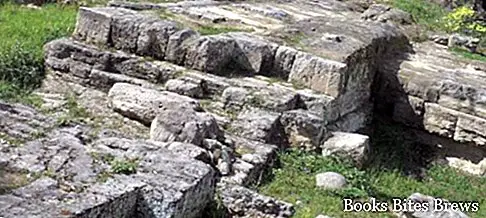What to see in Locri, a city of Calabria of ancient origin located in the Locride territory, an itinerary including the archaeological area with the Greek temple, the national museum and Roman theater.
Tourist information
Founded in the seventh century before Christ, ancient Locri experienced a flourishing period becoming in the fifth century one of the most important cities of Magna Grecia.
It began to decline during the Roman era, until it was destroyed by the Saracens.
Locri Epizefiri is an important very large archaeological area where numerous finds have been found.
At its entrance there is the base of an Ionic temple, dating back to the fifth century, and a portion of the city walls, continuing, on the slopes of the hill, you will find the Greco-Roman theater, while climbing higher you reach the temple of Persephone .
The National Museum of Locri Epizefiri is located inside the archaeological area, near a votive deposit dedicated to Zeus.
Inside are preserved the finds from the most recent excavations carried out in the area while those found during previous excavations are exhibited in Reggio Calabria, at the National Museum of Magna Grecia.
What see
The Roman theater, which dates back to the first century BC, represents the greatest testimony of that era.
The Cathedral, built in Lombard Romanesque style, was built in 1933 at the wish of the bishop Giorgio Delrio.
The interior has three naves, of which the two sides ending in two small chapels, the plan of the Church is a Latin cross.
In the center of the left nave there is a marble sculpture depicting the bishop Francesco Saverio Mangeruva, and the sarcophagus of the bishop Michele Alberto Arduino.
Recommended readings- Corigliano Calabro (Calabria): what to see in the medieval village
- Lamezia Terme (Calabria): what to see
- Calabria: Sunday day trips
- Nicotera (Calabria): what to see
- Rossano Calabro (Calabria): what to see
The main road in Locri is Corso Matteotti, which crosses the entire center, following the coast in parallel and perpendicularly crossing Via Garibaldi, another important artery that connects the station to the hospital.
Going along Via Garibaldi you reach Via Cusmano and the SS 106 Jonica which, in the stretch that crosses the city, is also called Via Marconi, while in the path from North to South you can reach Corso Vittorio Emanuele and Via Primo Maggio.




